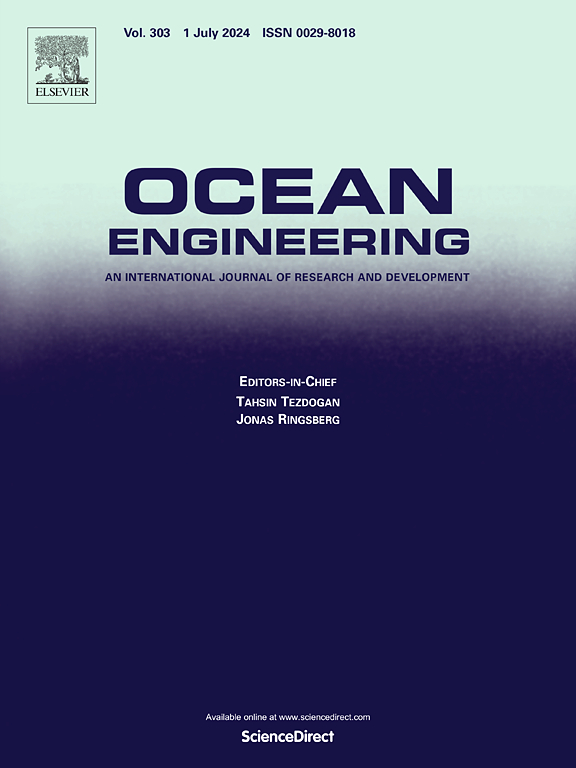Autonomous collision avoidance decision-making method with human-like attention distribution for MASSs based on GMA-TD3 algorithm
IF 4.6
2区 工程技术
Q1 ENGINEERING, CIVIL
引用次数: 0
Abstract
Ensuring the high-quality operation of an autonomous collision avoidance decision-making (CADM) system for Maritime Autonomous Surface Ships (MASSs) is essential for optimizing navigation safety. However, a gap remains in addressing the sequential collision avoidance problem in multi-ship encounter scenarios, which continues to present challenges for operations. To tackle the challenge, this paper proposes an autonomous CADM method based on Gated Recurrent Unit-enhanced Multi-head Attention Twin Delayed Deep Deterministic Policy Gradient (GMA-TD3) algorithm. The CADM framework consists of two main modules, a collision risk assessment module, powered by the Gated Recurrent Unit-enhanced Multi-head attention mechanism (GMA) mechanism to obtain the priority determination of obstacles based on the identified collision risk, and a motion decision module, driven by the GMA-TD3 algorithm to generate sequential collision avoidance decision with human-like attention distribution. Besides, a dual-level reward mechanism was incorporated to balance long-term goal orientation and immediate dynamic behavior. Comparative experiments show that the GMA-TD3 algorithm achieves the fastest convergence for the targeted problem and generates the shortest and smoothest trajectories. Simulation results further confirm that the proposed system accurately identifies the highest-risk obstacles before making decisions, ensuring timely and precise collision avoidance within a safe distance while fully adhering to COLREGs.
求助全文
约1分钟内获得全文
求助全文
来源期刊

Ocean Engineering
工程技术-工程:大洋
CiteScore
7.30
自引率
34.00%
发文量
2379
审稿时长
8.1 months
期刊介绍:
Ocean Engineering provides a medium for the publication of original research and development work in the field of ocean engineering. Ocean Engineering seeks papers in the following topics.
 求助内容:
求助内容: 应助结果提醒方式:
应助结果提醒方式:


